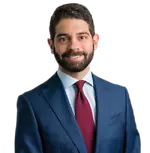
The Bipartisan Infrastructure Law established the National Electric Vehicle Infrastructure (NEVI) formula program in an effort to jumpstart the development of electric vehicle (EV) charging networks. To support that endeavor, the NEVI formula program allocates $5 billion, over five years, to states to deploy publicly accessible electric vehicle charging infrastructure (EVCI) along an interconnected national network.1 There are three particularly noteworthy elements of the NEVI formula program:
- First, the NEVI formula program funds are distributed on a formula basis, meaning that every state receives a specified amount each year for these purposes.
- Second, the eligible activities for which NEVI formula program funds may be used are relatively constrained compared to the other formula programs administered by the Federal Highway Administration.
- Third, the infrastructure to be developed under the NEVI formula program are revenue producing assets.
As a result, many states have opted to deliver NEVI projects utilizing a public-private partnership (P3) project delivery method. As with the structuring of any P3 project, there are several considerations relevant to the decision to structure and implement a NEVI project as a P3.
Industry Outreach
Market engagement is critical for a successful P3 in this setting given the nature of the asset. Gathering initial information from the marketplace via requests for information, surveys, and informational sessions can help public owners avoid any setbacks down the road and provide crucial information that can help structure the deal.
Stewardship Requirement
State departments of transportation are sometimes reticent to spearhead the buildout of electric vehicle (EV) charging networks given how different this asset is from traditional concrete and steel projects, but the NEVI formula program has placed that responsibility upon public owners.
Revenue Generation
NEVI projects involve a higher degree of uncertainty regarding potential revenue generation than other revenue-producing facilities, given the evolving nature of EV adoption. The commercial feasibility challenges stem from the high uncertainty of cash flow from both the public owner (e.g., excessive downtime of the EV chargers due to software/hardware issues, external damage, weather, and human error) and users (e.g., unexpectedly low demand and usage). Consequently, project sponsors and private sector partners must work together to ascertain the reasonable revenue assumptions for each potential site for EVCI.
The NEVI formula program is an important program that will catalyze EVCI deployment nationwide. While there is no one-size-fits-all approach to implementing a NEVI project, P3 delivery may be a natural fit. Consideration of these issues can help public owners ensure that their NEVI projects are implemented successfully. This fall, the Federal Highway Administration has produced reports and discussion papers2 and analytical tools3 to aid public agencies that are considering the use of a P3 or other performance-based contract to deploy EVCI.
1 More information on the NEVI formula program is available here.
2 The papers discuss a number of subjects such as structuring options for performance-based contracts for EVCI, market engagement and partner selection for P3s for EVCI, and the state of the practice of P3s for EVCI.
3 The following three tools are available: (1) the EVCI-FAST Analytical Tool is used to help the public agency determine the financial viability and affordability of an EVCI project; (2) the EVCI-SCREEN Analytical Tool is used to determine whether the public agency is ready to start an EVCI procurement and the suitability of a P3 structure; and (3) the EVCI-STAT Analytical Tool is used to align the project with the public agency’s strategic objectives.
- Partner
Shant Boyajian advises public agencies on a wide range of innovative methods to procure and deliver the nation’s largest, most complex infrastructure projects. Clients have found tremendous value in his deep experience in ...
- Associate
Adeyemi Ojudun’s practice focuses on P3 and alternative delivery projects and includes counseling clients on procurement structure, contract drafting and proposer instructions. Adeyemi has worked with Los Angeles County ...
Nossaman’s 30-plus infrastructure attorneys offer clients, colleagues, strategic partners and industry media a wealth of practical experience, insider insight and thoughtful analysis here on Infra Insight. We blog about what we know best, from industry-leading procurements to local and national policy developments that affect the market and our clients.
Stay Connected
 RSS Feed
RSS Feed
Categories
- Airports
- Alternative Project Delivery
- Bridges
- California Environmental Quality Act
- Cybersecurity
- Design-Build
- Financing
- High-Speed Rail
- Job Opening
- Legislation
- News
- P3s
- Policy
- Ports
- Rail and Transit
- Social Infrastructure
- Tollroads/ Turnpikes/ Managed Lanes
- Transportation Infrastructure
- Tunnels
- Water


